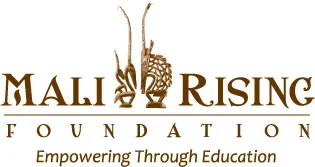By Katie Boutwell, Mali Rising Research Intern
As part of her work with us this summer, Katie is exploring several side research threads of personal interest. On the blog, she is sharing some of the topics she has found interesting in the hope that you too will find them interesting. In this post, Katie discusses the languages of Mali.
Due to the diversity of language composition in Mali, the education system is faced with a challenge of how to create an education reform that addresses the array of language needs. Due to its colonial history, Mali has established French as the officallanguage. But what does that mean for those who speak the languages shown in the pie chart here?
As in many post-colonial nations, a national language establishes an education system in that language in order to encourage individuals to conform to national goals. In contrast, challenges emerge of maintaining local languages learned outside of the education system.
In Mali specifically, the first several years of primary schooling is taught in most prominently Bambara. Bambara makes up 46% of the primary language spoken in Mali (see chart). By the time students transition into middle school, the language of instruction has shifted entirely shifts to French, posing the challenge of properly preparing students for their transition to French while maintaining comprehension in their primary language.
There are both pros and cons to focusing on French in the Mali educational system. The pros include the reality that French skills allow students a chance to connect with the global sphere of business and government. Other pros include the benefit developmentally of dual language competency and a sense of a shared community of language among the learners. Cons of the country’s focus on French include an implied disregard for local native languages, the cultural loss that may result as young people lose connection to their language, and the symbolic power of continuing the colonial relationship with the language.


